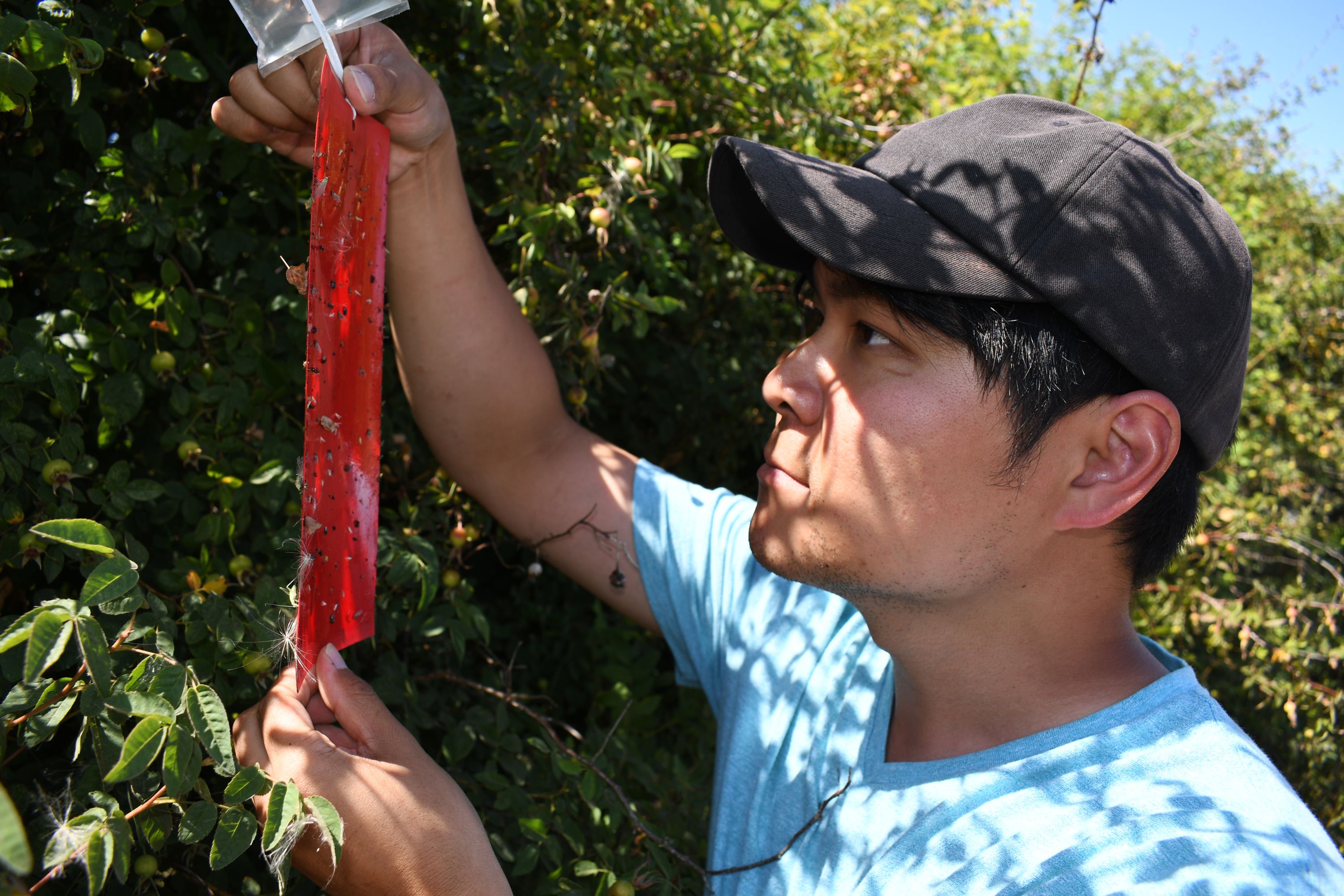Hoping a Tiny Wasp Has a Huge Impact in Controlling Spotted Wing Drosophila

As South Korean imports go, Ganaspis brasiliensis will never have the popular cachet of pop sensations BTS or TV dramas like Squid Game, but for small fruit growers the tiny wasp might become the biggest superstar of all.
That’s because Ganaspis brasiliensis is a parasitic wasp that lays eggs into the larvae of the spotted-wing drosophila fruit fly, an invasive insect that’s been plaguing growers of small fruit and berries since it was accidentally introduced into the mainland United States in 2008.
Without natural enemies, spotted wing drosophila quickly spread to 45 states, causing billions in losses in damaged fruit and forcing growers to increase insecticide sprays or risk losing their crops.
Now, the U.S. Department of Agriculture and several cooperating universities are rearing and releasing the small, stingless wasps, hoping to achieve ecological balance and reduce spotted wing drosophila populations significantly – and permanently.
Kyoo Park, a research associate at Oregon State University, is on the front lines of this ecological arms race, releasing the wasps around blueberry farms in Independence, Oregon.
“The parasitoid wasps were collected from South Korea a couple of years ago and have been studied in quarantine,” he said. “Last year, we finally got permission to release them in the field and this summer will be our second release. We’re seeing if they adapt to this new environment and we’re also testing if they are attacking the spotted-wing drosophila.”
Unlike most fruit flies that deposit eggs into already rotting or damaged fruit, spotted-wing drosophila females have a sharply serrated egg-laying appendage that allows them to pierce the skin of unripe, developing fruit and lay their eggs inside. The larvae that develop consumes the fruit from the inside, making it susceptible to disease and unsaleable.
The fly can be a serious economic problem for blackberries, blueberries, cherries, raspberries and strawberries, and also lives in numerous non-crop host plants.
The U.S. Department of Agriculture quarantine is designed to test the host-specificity of potential biocontrol insects, making sure they only attack the intended target species or closely related cousins. The Ganaspis b. wasps, which are less than two millimeters long and don’t harm people, passed that test.
To plan his release of 3,000 wasps, Park was looking at the ripeness of the wild blackberries growing at the edges of the commercial blueberry farm and used as a refuge for the invasive insects who lay their eggs in the blueberry crop and wild blackberries. Park wanted to see ripe blackberries, knowing larvae in them would be starting to emerge before he released the wasps.
Because the wasps lay their eggs into those larvae, they need a good “crop” of larvae to breed into.
Park and his colleagues will also place traps in their field to monitor the number of the wasps, and then check again a month later to see if new wasps are emerging from parasitized spotted-wing larvae.
“The goal is to release as many wasps as possible and hopefully they’re going to adapt to the environment and growers won’t need to release more because they’ve populated themselves,” he said. “The climate is similar in South Korea and Oregon and we actually have a lot of native South Korean plants here, so they’ll likely to be able to adapt to the climate but we can’t say with certainty because we’re still doing the research.”
The quarantine report about the Ganaspis b. wasp, by the U.S. Department of Agriculture’s Animal and Plant Health Inspection Service, does note the uncertainty of success.
According to the report, only about 12 percent of all parasitoid introductions led to significant sustained control of the target pests. The rest failed because biocontrol introduction did not lead to establishment or establishment did not lead to control.